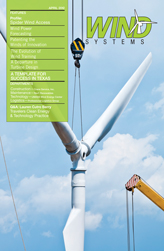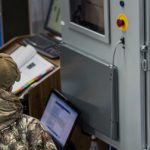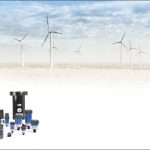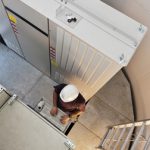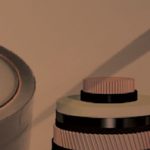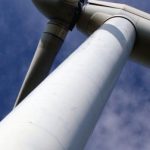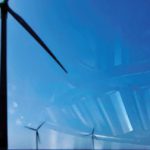Ralph Waldo Emerson once said “Build a better mousetrap, and the world will beat a path to your door.” A Wyoming inventor may have done just that with a complete redesign of traditional wind energy towers and turbines. His fledgling company, Airgenesis, is based in the northern Colorado town of Fort Collins. Long known for its green energy initiatives, Fort Collins seems a perfect fit for a wind energy business.
Danny “Skip” Smith developed a vision to improve wind energy during his work-related drives across the windswept plains of Wyoming and northern Colorado. He mulled new concepts and problem-solved for over 13 years. After his retirement three years ago the pieces fell into place, and Smith began developing Airgenesis in earnest.
Innovative Design
Imagine twin rotor blades turning at an efficient three revolutions per minute, and you have a snapshot of Airgenesis. The design is a simple but radical departure from traditional wind towers. The innovation has generated 408 separate claims for patent. Airgenesis engineers narrowed those claims to 25 PCT patents. Those patents are expected by the time of this publication.
While some manufacturers strive for taller towers, seeking to capture a more-constant air stream, Smith is betting that bigger is not better. The Airgenesis system incorporates a 250-foot tower and two sets of rotors at a 60-degree opposition. Rotor blades are 165 feet in length and will be sourced from current manufacturers. The object of the design is to target slower wind speeds. The design is efficient enough to generate 11MW at just 2.4 to 3.3 rpms. Figure 1
Traditional towers turn at 12 to 18 revolutions per minute and require wind speeds between 25 mph and 56 mph to achieve full efficiency. Airgenesis rotors produce 1.5MW, equaling the full output of most traditional wind towers at a much lower wind speed. Eleven MW of power production is an ambitious—if not audacious—claim in a field where most towers are producing 1.5MW, and even the largest of new designs approach only 3MW of production power. “Eventually, as the industry continues trying to solve their problem of building larger, taller, and heavier units,” Smith says, “they will hit a wall and come to the realization the Airgenesis design is the only workable solution to the wind industry’s future.”
Seeking Simplicity
The Airgenesis design results in a lighter and significantly less complicated nacelle. The only major components housed in the nacelle are gears and disc brakes. Once installed, most maintenance on Airgenesis towers can be performed at ground level, including swapping out generators and clutch systems. The drive system features five 50 foot-long drive shafts connected with appropriate couplers and carrier bearings. Figure 2
There are few components in the nacelle, with very few things to break down. Maintenance on the nacelle will be on a yearly basis. Scheduled maintenance on the blades is performed in accordance with industry standards. The Airgenesis wind turbine relocates the substantial weight of the nacelle from the top of the wind tower to the base. Its unique dual-rotor system, sophisticated mechanical clutching system, and integrated ratcheting generator mechanism have nearly tripled the energy production of a single tower. The placement of the nacelle weight to the tower base greatly reduces tower structural requirements and tower stability concerns, while the offsetting dual rotors ensure a maximum harvest of available winds.
“The relocation of the substantial weight of the electrical generators from the nacelle atop the wind tower to the tower base makes tremendous sense and pays a variety of dividends,” according to Terry Wright, chief technology officer at Green Energy Development in Johns Creek, Georgia. “These include reduced tower construction requirements, lowered insurance risks and maintenance costs, and potential ease of generator upgrades as these technologies evolve in efficiency and production capacity. These benefits are especially viable for offshore wind applications where platform stability is critical and sensitivity to maintenance expenses are amplified.” Figure 3
Not all of the news is in the nacelle. With the Airgenesis design, multiple generators are arrayed at the tower base, another style change from current standards. Their placement on the ground allows units to be easily serviced or replaced in the event of generator failure. This unique feature allows the tower to remain online, even during a generator swap or clutch assembly repair. The generator size is dependent on the megawatts produced by the tower.
The company has secured Proof of Concept on four models of wind towers. Through simple downscaling of key transmission mechanics, the design will be available in 3.3, 5.5, and 7.7MW sizes, as well as the largest 11MW unit. The tower and blade height would remain the same on all Airgenesis products. To accommodate the generators, the tower base is expected to be 34 feet in diameter. A 14-foot flywheel in the tower base transfers energy to the generators. Figure 4
A Developer’s Perspective
“As a developer of all forms of renewable energy production facilities, we believe the wind component is critical for creating and sustaining momentum in the overall renewable energy sector,” Wright says. “We are always on the lookout for emerging and potentially ‘game-changing’ renewable technologies, and believe Airgenesis is a prime example. The initial business appeal of the Airgenesis wind turbine is its expanded production capacity per tower and supporting strong intellectual property, or patents. The company’s appeal is considerably amplified by their reduced capital expenditure profile, substantially lower maintenance costs, and reduced threat to avian/bat mortality—an increasingly sticky issue in obtaining EPA and Fish & Wildlife project site and operational permits.
“Of course, the expanded production capacity lowers overall production start-up expense by reducing site preparation, tower foundation, and lease expenses against anticipated energy production,” he says. “The reduced maintenance expense improves the operational cost profile. All of these attributes speak to competitive advantage in the marketplace for wind energy production facility owner/operators.”
Cost Efficiency
The Airgenesis 11MW tower is expected to cost about $600,000 per MW when complete, or roughly half of the cost of wind towers in production. Current 1.5MW towers require an approximate $1.3 million per MW in construction costs. Most of the setup is on the ground, which will speed turbine installation. Planning is underway to construct and test the 11 MW tower in 2012. The project location is still under wraps.
“The emergence of Airgenesis wind turbines in the marketplace will benefit the wind sector in a number of ways including improved cost parity against traditional energy production,” Wright says, “as well as providing wind facility owner/operators a highly efficient, lower cost, alternative wind offering against traditional wind turbine manufacturers. We believe Airgenesis will deliver substantial value to the renewable energy sector as it demonstrates what we believe will be a game-changing value proposition.”
Assuring Quality
In part to address the supply chain issues facing wind-energy professionals throughout North America, all components of the Airgenesis wind system—with the exception of the generators—are to be manufactured in the United States. “It would be cheaper to use overseas manufacturers,” Smith says, “but it is important to me to source components in the United States for Airgenesis products.”
He hopes the new design will be more environmentally friendly than current technology, as well. Although untested, Airgenesis engineers theorize the slower blade speed may have less of an impact on migratory birds and bats. Avian mortality threats are mitigated by constraints imposed on rotor rpms. The torque generated by these same constraints is transformed into energy.



















